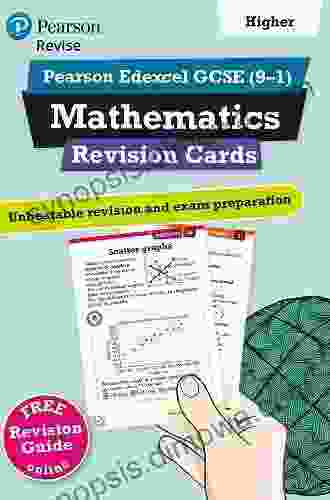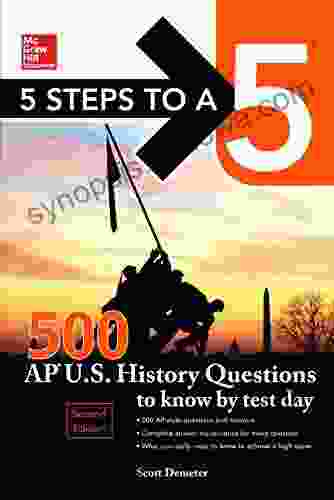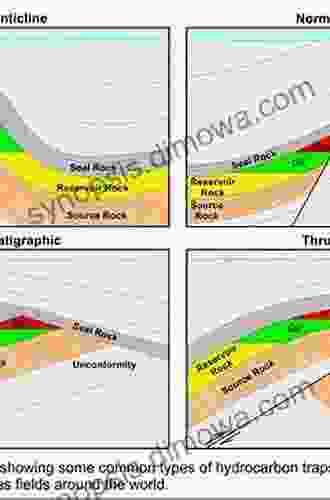Algorithmic Information Theory: Unlocking the Secrets of Data and Computation

Algorithmic information theory (AIT) is a branch of computer science that studies the complexity and randomness of data. It provides a mathematical framework for understanding how information can be represented, processed, and transmitted.
AIT has a wide range of applications, from data compression and cryptography to machine learning and artificial intelligence. It is also used in theoretical computer science to study the foundations of computation.
4.7 out of 5
| Language | : | English |
| File size | : | 21497 KB |
| Print length | : | 192 pages |
| Screen Reader | : | Supported |
This book provides a comprehensive to AIT. It covers the basic concepts of the theory, as well as the latest advances in the field.
Table of Contents
- Basic Concepts
- Advanced Topics
- Applications
AIT is a relatively new field of study, with its roots in the 1960s. However, it has quickly become one of the most important branches of computer science. This is due to the fact that AIT provides a powerful way to understand the complexity and randomness of data.
One of the most important concepts in AIT is the notion of algorithmic complexity. Algorithmic complexity measures the difficulty of computing a given function. It is defined as the length of the shortest program that can compute the function.
Algorithmic complexity can be used to measure the difficulty of a wide range of problems, from sorting a list of numbers to solving a chess game. It is also used to study the efficiency of algorithms.
Basic Concepts
The basic concepts of AIT are relatively simple. However, they can be used to derive a wide range of powerful results.
One of the most important basic concepts is the notion of a Turing machine. A Turing machine is a simple mathematical model of a computer. It consists of a tape, a head, and a set of instructions.
The tape is divided into cells, each of which can store a single symbol. The head can read and write symbols on the tape. The instructions tell the head what to do, such as move left, move right, read a symbol, or write a symbol.
Turing machines are simple, but they are powerful enough to compute any function that can be computed by a real computer.
Another important basic concept is the notion of a Kolmogorov complexity. Kolmogorov complexity measures the randomness of a string of symbols. It is defined as the length of the shortest program that can generate the string.
Kolmogorov complexity can be used to measure the randomness of a wide range of objects, from text files to images to music.
Advanced Topics
The advanced topics in AIT are more complex than the basic concepts. However, they provide a deeper understanding of the theory.
One of the most important advanced topics is the notion of a universal Turing machine. A universal Turing machine is a Turing machine that can simulate any other Turing machine.
Universal Turing machines are important because they allow us to compare the complexity of different algorithms. We can simply run the algorithms on a universal Turing machine and measure the time it takes to compute the result.
Another important advanced topic is the notion of a Kolmogorov-Chaitin complexity. Kolmogorov-Chaitin complexity is a measure of the randomness of a string of symbols that takes into account the computational resources that are available.
Kolmogorov-Chaitin complexity is important because it provides a way to measure the randomness of objects that cannot be generated by any known program.
Applications
AIT has a wide range of applications, from data compression and cryptography to machine learning and artificial intelligence.
One of the most important applications of AIT is data compression. Data compression algorithms use AIT to find the shortest possible representation of a given data set. This can be used to reduce the storage space required for a data set or to reduce the transmission time required to send a data set over a network.
Another important application of AIT is cryptography. Cryptographic algorithms use AIT to create codes that are difficult to break. This can be used to protect sensitive data from unauthorized access.
AIT is also used in machine learning and artificial intelligence. Machine learning algorithms use AIT to learn from data. Artificial intelligence algorithms use AIT to make decisions and solve problems.
AIT is a powerful and versatile theory that has a wide range of applications. It is a fundamental tool for understanding the complexity and randomness of data and computation.
This book provides a comprehensive to AIT. It covers the basic concepts of the theory, as well as the latest advances in the field.
4.7 out of 5
| Language | : | English |
| File size | : | 21497 KB |
| Print length | : | 192 pages |
| Screen Reader | : | Supported |
Do you want to contribute by writing guest posts on this blog?
Please contact us and send us a resume of previous articles that you have written.
 Book
Book Novel
Novel Page
Page Chapter
Chapter Text
Text Story
Story Genre
Genre Reader
Reader Library
Library Paperback
Paperback E-book
E-book Magazine
Magazine Newspaper
Newspaper Paragraph
Paragraph Sentence
Sentence Bookmark
Bookmark Shelf
Shelf Glossary
Glossary Bibliography
Bibliography Foreword
Foreword Preface
Preface Synopsis
Synopsis Annotation
Annotation Footnote
Footnote Manuscript
Manuscript Scroll
Scroll Codex
Codex Tome
Tome Bestseller
Bestseller Classics
Classics Library card
Library card Narrative
Narrative Biography
Biography Autobiography
Autobiography Memoir
Memoir Reference
Reference Encyclopedia
Encyclopedia Jeff Erno
Jeff Erno Manoj Bhatia
Manoj Bhatia Dean G Parsons
Dean G Parsons Thomas D Peacock
Thomas D Peacock Lorenz Ratke
Lorenz Ratke David Young
David Young Deborah M Abrams
Deborah M Abrams David Pattison
David Pattison David Barrett
David Barrett David Gessner
David Gessner Shashi Tharoor
Shashi Tharoor David F Arnold
David F Arnold Gillian Osborne
Gillian Osborne David Wheaton
David Wheaton David Nicol
David Nicol Richard Fenton
Richard Fenton Kevin D Randle
Kevin D Randle Wolfgang Daunicht
Wolfgang Daunicht Deborah Ruddell
Deborah Ruddell Paul Boudreau
Paul Boudreau
Light bulbAdvertise smarter! Our strategic ad space ensures maximum exposure. Reserve your spot today!
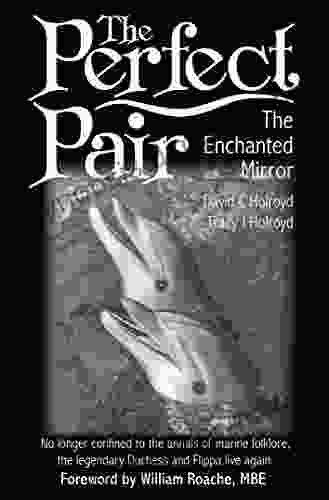
 Ervin BellJourney into the Magical Depths with "The Enchanted Mirror: The Perfect Pair...
Ervin BellJourney into the Magical Depths with "The Enchanted Mirror: The Perfect Pair...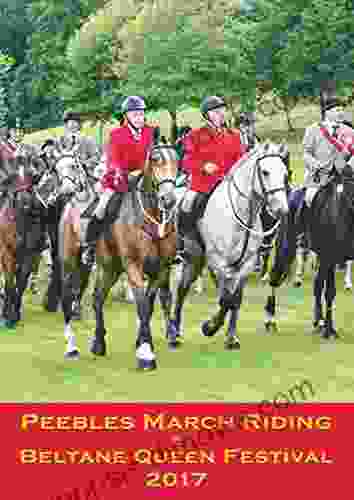
 Julio CortázarUnveiling the Enchantments of Peebles March Riding and Beltane Queen Festival...
Julio CortázarUnveiling the Enchantments of Peebles March Riding and Beltane Queen Festival... Darius CoxFollow ·4.6k
Darius CoxFollow ·4.6k Gary CoxFollow ·5.3k
Gary CoxFollow ·5.3k Travis FosterFollow ·14.7k
Travis FosterFollow ·14.7k Mason PowellFollow ·14.4k
Mason PowellFollow ·14.4k Hayden MitchellFollow ·14.1k
Hayden MitchellFollow ·14.1k Dan HendersonFollow ·16.9k
Dan HendersonFollow ·16.9k Arthur MasonFollow ·13.1k
Arthur MasonFollow ·13.1k Ricky BellFollow ·15.2k
Ricky BellFollow ·15.2k

 Aron Cox
Aron CoxMastering Project Management: The Ultimate Guide to...
In today's competitive...

 Dominic Simmons
Dominic SimmonsLet's Build Sue Fliess: Unleash the Polychrome Master...
Chapter 1: The...
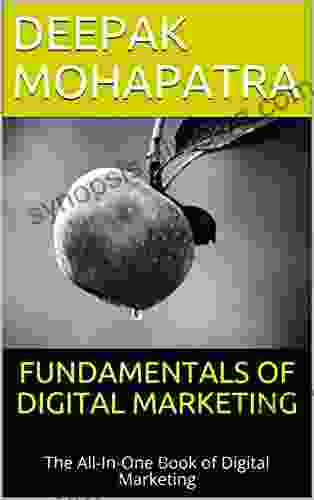
 Mason Powell
Mason PowellMaster the Digital Marketing Landscape: Fundamentals of...
In the age of digital...
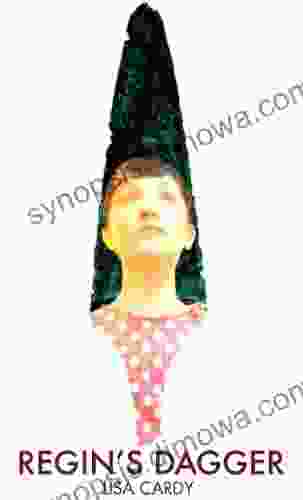
 Aubrey Blair
Aubrey BlairUncover the Secrets of Ancient Blades and Enchanting...
Embark on an Enchanting Journey into the...

 Shannon Simmons
Shannon SimmonsUnleash the Spooktacular with Spooky Crochet Tutorials...
Prepare to be spooked...

 Cade Simmons
Cade SimmonsImmerse Your Little Ones in a World of Enchantment with...
Nursery rhymes have forever ignited the...
4.7 out of 5
| Language | : | English |
| File size | : | 21497 KB |
| Print length | : | 192 pages |
| Screen Reader | : | Supported |



